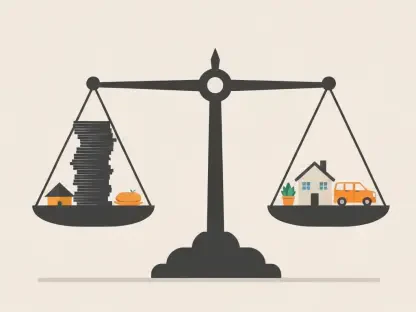In recent years, the accuracy and management of death records within the Social Security system have come under intense scrutiny due to concerns about improper benefit payments. The discrepancy between death records and internal documentation held by the Social Security Administration (SSA) has sparked significant debate, raising eyebrows over potential fraud and inefficiencies. Numerous accusations have been lodged by high-profile figures, suggesting millions of deceased beneficiaries are still receiving Social Security payments. However, a closer examination provides a clearer picture and highlights ongoing efforts to rectify these imbalances.
The Importance of Accurate Death Records
The Social Security Administration (SSA) heavily depends on accurate death records to ensure the integrity of its benefits system. These records serve as a cornerstone in preventing payments to deceased individuals and in maintaining the proper distribution of benefits. When death records are not updated or managed correctly, there is a risk that benefits intended for deceased individuals may continue to be disbursed, leading to improper payments and potential misuse of taxpayer funds.
For over a decade, the SSA’s Office of the Inspector General has been diligently auditing and updating these records to remove deceased individuals from the benefit rolls. This exhaustive effort aims to close the gaps that exist between state-held death data and the SSA’s own databases, ensuring that all deceased beneficiary records are accurately reported and updated. The long-term goal is to enhance the precision and reliability of the system, safeguarding against improper benefit distributions.
Discrepancies in Death Records
Audits undertaken by the SSA have uncovered significant discrepancies in the death records maintained by various states and other federal agencies compared to those within the SSA’s systems. A telling example is the audit of the SSA’s “Numident” master file, which revealed an alarming number of unrecorded deaths. In particular, it found millions of individuals born in 1920 or earlier without any recorded death, although only a small fraction of these individuals were actually collecting benefits.
Contrary to dramatic claims by some public figures, the notion that millions of deceased individuals are actively receiving benefits appears to be a misunderstanding. Examining these records more closely reveals that only a minor percentage of discrepancies link to active payments. The narrative suggesting widespread fraud due to deceased beneficiaries collecting Social Security has been largely debunked, but it remains a topic of public concern and confusion.
Efforts to Refine the System
Following her appointment by President Donald Trump, Gail Ennis took significant steps to streamline the process of updating death records within the SSA, particularly after 2019. Her intensified efforts aimed to refine the potential number of erroneous payments, demonstrating the need for exact and current record-keeping practices. This rigorous approach has led to more precise identification and removal of deceased individuals from active payment rolls.
Earlier audits, such as those led by Patrick P. O’Carroll Jr., also acknowledged substantial numbers of non-updated records. Despite these findings, only a small portion involved active payments and these errors were often due to incorrect birth dates rather than any deliberate action. These decades-long efforts demonstrate the complexity and necessity of ongoing vigilance in maintaining accurate beneficiary data.
Costs and Complexities of Record Management
The task of updating and correcting old data within the SSA is not only exhaustive but also expensive and complex. Social Security Administration officials often debate whether the high costs incurred for such extensive audits are justifiable given the anticipated reductions in improper payments. The challenge lies in balancing meticulous data management with practical financial considerations.
Audits that compare state death records with SSA files, such as those conducted in California, have shown that many inactive accounts are not actively receiving benefits, which reduces the perceived risk of widespread fraud. However, the effort required to update these records correctly remains substantial, often involving coordination with multiple agencies and systems.
Specific Audit Findings
A 2021 audit of California records, spanning the period from 1905 to 2017, brought to light significant errors and instances of fraud, where benefits were still being collected by third parties for deceased individuals. Such findings underscore the necessity of continuous audits to promptly identify and rectify improper payments. In addition to this, the audit uncovered over 50 potential cases of improper payments that are currently under review.
These audits illustrate the ongoing need for vigilance and rigorous procedures to ensure the accuracy of beneficiary records. While the number of fraudulent or erroneous cases may be relatively small, the potential financial impact and public trust implications necessitate sustained efforts to manage and correct these records.
Financial Impact and Savings
The cumulative result of various audits since the early 2000s has identified over $875 million in improper or potentially improper payments. These findings highlight both the scale of the issue and the significant financial implications for the Social Security system. Despite the challenges, the SSA’s diligent efforts have yielded substantial savings. For instance, after implementing certain major audits, the SSA saved an estimated $150 million within just one year.
These savings are a testament to the importance of rigorous and ongoing audits. Accurate record-keeping not only ensures that benefits are distributed correctly but also helps prevent misuse of funds, thereby enhancing the financial health of the Social Security program.
Broader Issues of Social Security Fraud
Beyond the challenge of managing death records, the SSA faces other forms of fraud, particularly within the Social Security Disability Insurance (SSDI) and Supplemental Security Income (SSI) programs. These programs often entail more complex verification processes, making fraud detection and prevention more difficult and costly. The intricacies of verifying disability claims and income status add layers of complexity that surpass the straightforward process of identifying deceased individuals.
Political challenges and public perceptions exacerbate these difficulties. Figures like Gail Ennis and other officials leading anti-fraud initiatives often faced intense scrutiny and backlash, reflecting the contentious nature of tackling fraud within the Social Security system. Ennis’s resignation amid such scrutiny highlights the broader challenges of balancing anti-fraud efforts with political and public pressures.
The Issue of Identity Theft
An additional layer of complexity arises from the issue of identity theft. A significant number of outdated Social Security numbers are exploited by unauthorized individuals for employment purposes, raising further concerns about fraud and misuse. This misuse of Social Security numbers complicates the SSA’s efforts to manage and update its records comprehensively.
To address this, the SSA has made strides in reconciling earnings linked to these outdated numbers with its Earnings Suspense File (ESF). By doing so, the SSA ensures that unauthorized earnings are recorded without resulting in fraudulent benefit claims. While this contributes positively to the Trust Fund, it also exemplifies the multifaceted challenges faced in maintaining clean and secure records.
Public Trust and Perceptions
Public trust in the Social Security system is crucial for its effective functioning. However, the existence of millions of outdated and inactive records has fueled criticism, conspiracy theories, and skepticism towards the SSA. These public perceptions often clash with the reality of the SSA’s efforts to refine and improve its operations, complicating the landscape of social security management.
The persistence of these records and the narratives surrounding them underscores the need for transparency and ongoing communication about the efforts made to ensure system integrity. By addressing public concerns and dispelling misconceptions, the SSA can foster greater trust and collaboration in its quest to maintain accurate and secure beneficiary data.
Conclusion
In recent years, the precision and management of death records within the Social Security system have faced intense scrutiny. Concerns about improper benefit payments have brought these issues to the forefront. The discrepancy between death records and internal documentation maintained by the Social Security Administration (SSA) has been a significant topic of debate, raising questions about potential fraud and inefficiencies. High-profile figures have accused the system of continuing to issue Social Security payments to millions of deceased beneficiaries. These allegations have sparked widespread concern and criticism. Nevertheless, upon closer inspection, a more nuanced picture emerges. It becomes evident that efforts are underway to address and correct these discrepancies. These ongoing initiatives aim to enhance the accuracy of the death records, ensuring that Social Security payments are distributed appropriately and that the system operates efficiently.









